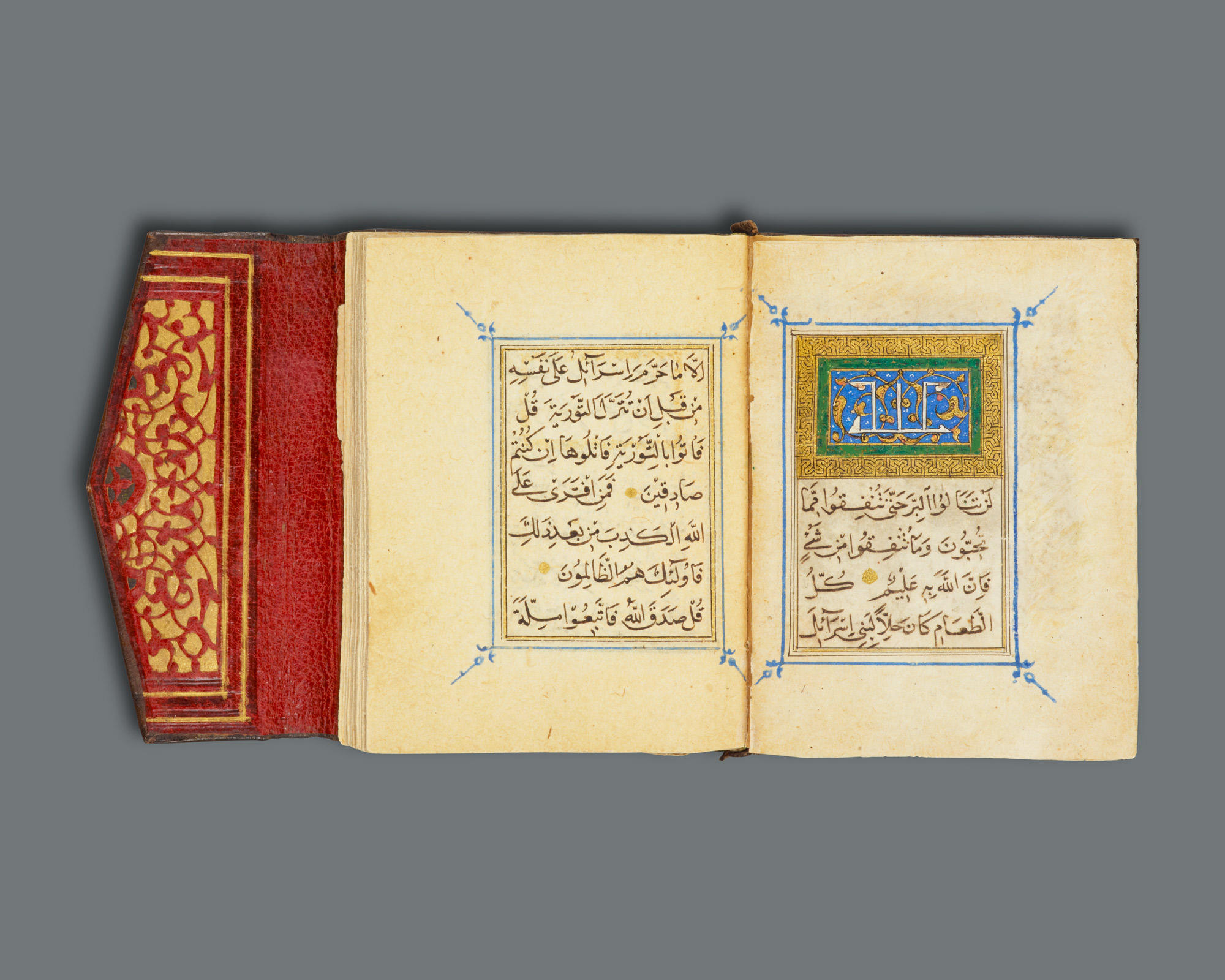Click on the image to zoom
Qur’an Juz’
- Accession Number:AKM829
- Place:Iran
- Dimensions:Folio: 6.6 x 4.7 cm
- Date:mid-15th century
- Materials and Technique:Ink, opaque watercolour, and gold on paper, leather binding
Dividing the Qur’an into thirty sections enabled Muslims to memorize or recite an individual section each day, especially in the fasting month of Ramadan. Each section, called juz’, was a separate volume, as is the case in this juz’ that was copied under the Timurids, who ruled in Iran and Central Asia between 1370 and 1507. This palm-size Qur’an juz’ got the full attention that would have been given to a large, elaborate manuscript. Its forty-two pages, each with seven lines, are written in a crisp cursive naskh script, the text is outlined with a simple decorative border, and the heading is intricately illuminated. The quality of the leather binding, however, is what is most remarkable about this small Qur’an. The binding has cartouches with gilt and stamped designs on the outside and cut filigree on the inner face of the binding (doublures), rendering this Qur’an truly exceptional.
Note: This online resource is reviewed and updated on an ongoing basis. We are committed to improving this information and will revise and update knowledge about this object as it becomes available.


